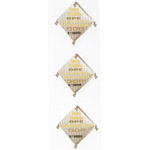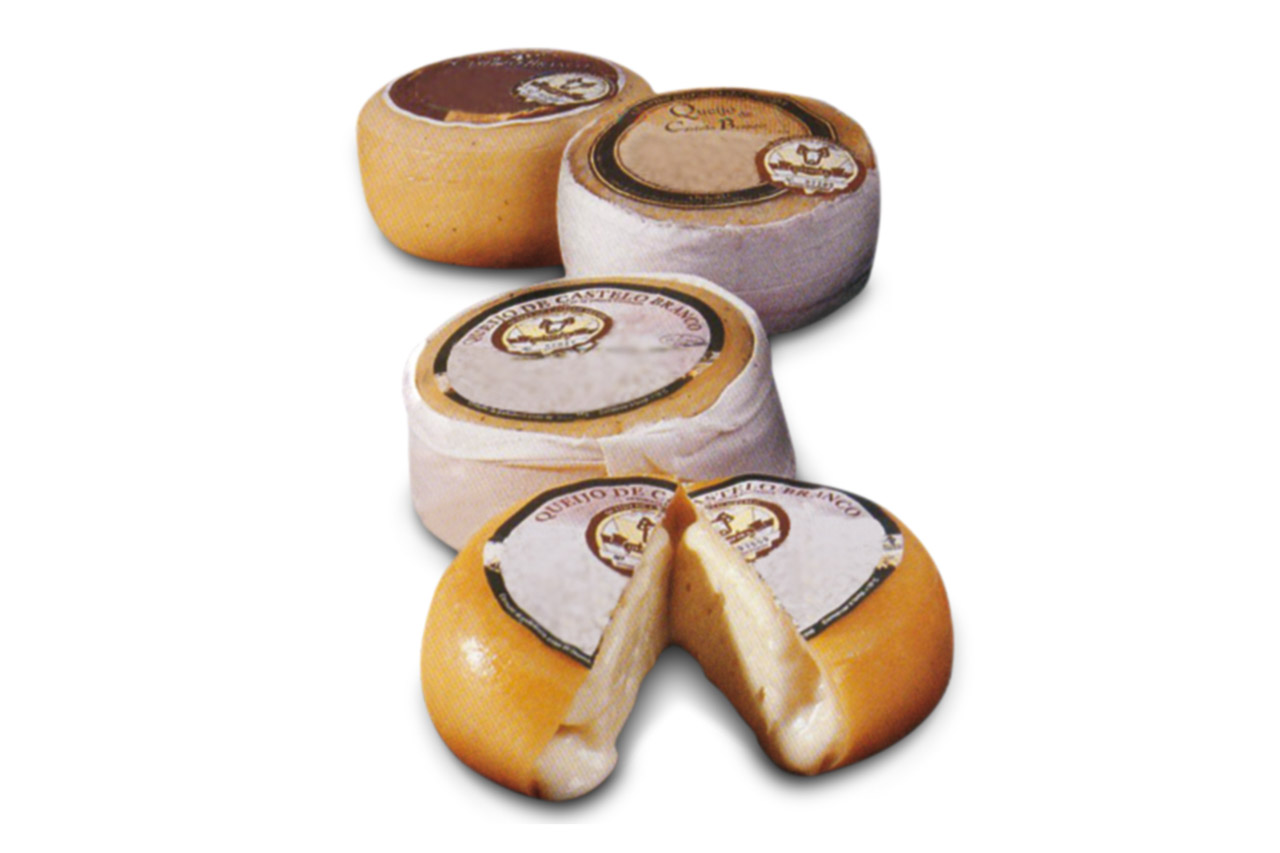Description
The Queijos da Beira Baixa PDO are semi-hard cheeses made from sheep's milk in the following sub-divisions: Queijo de Castelo Branco PDO, Queijo Picante da Beira Baixa PDO and Queijo Amarelo da Beira Baixa PDO. These cheeses each have very distinctive flavours and are therefore sub-divided into the areas of their production.
Production Area
Queijos da Beira Baixa PDO cheeses are made in the municipal areas in the district of Castelo Branco and part of the Santarém district.
Production Method
the flocks of sheep are kept out in the fields in the open air all the year round. They graze on natural vegetation, some of which is specifically planted. The cheeses are made in two ways: the ovelheira method where only sheep's milk and the naturally occurring Cardoon flower (Cynara cardunculus) is used as coagulant, such as Queijo de Castelo Branco PDO and the cabreira method where both goats' and sheep's milk is used which is coagulated with rennet, such as Queijo Picante PDO and Amarelo PDO cheese. Queijo de Castelo Branco PDO is aged for approximately 40 days at a temperature of between 8°C and 14°C. This period is extended to 120 days for Queijo Picante cheese at a temperature of between 10°C and 18°C. Lastly Queijo Amarelo cheese is left for 40 days to age at a temperature of between 10°C and 18°C.
Appearance and Flavour
Queijos da Beira Baixa PDO vary in appearance and flavour depending on the variety. Queijo de Castelo Branco PDO is a semi-hard or semi-soft cheese with a yellowish colour, very few air bubbles and a malleable, smooth, straw or reddish coloured rind; it has a full flavour which is slightly spicy in the more mature examples. Queijo Picante is a hard or semi-hard cheese, the colour is a greyish white, with no air bubbles and no rind; it has a distinctive aroma and a spicy taste. Queijo Amarelo is a semi-hard or semi-soft cheese with irregular air bubbles, is yellowish in colour with a semi-hard, fine, deep yellow rind; it has a strong and pleasant aroma and a clean, slightly acidic taste. All these cheeses are cylindrical in shape and all have well defined edges except for Queijo de Castelo Branco PDO.
History
The origins of Queijos da Beira Baixa PDO are closely linked to the pastures of the Beira Baixa region. Since time immemorial the flocks of sheep of the Serra da Estrela Mountains have been brought to graze here because of the harsh mountain climate during the winter months. Cheese making in the Castelo Branco region began in about 1870, before that the sheep had only been kept for their wool. The spur for this was probably provided by the building of the Beira Baixa railway which created a quicker connection to Lisbon, which was the principal destination of the people of Castelo Branco and therefore the principal market for Beira Baixa cheeses.
Gastronomy
Queijos da Beira Baixa PDO cheeses were originally stored in glass or ceramic containers in olive oil or at a cold temperature. Today the cheese should be kept in the fridge at between 0°C and 12°C. It is excellent eaten with an aperitif or served as a starter or at the end of a meal. It is an excellent snack with a slice of fresh, crusty bread.
Marketing
This cheese is sold in the following variations: Queijos da Beira Baixa PDO - Queijo de Castelo Branco PDO, Queijo Picante da Beira Baixa PDO and Queijo Amarelo da Beira Baixa PDO. It is sold whole, in portions or ready sliced, prepacked in cling film, clearly labelled, bearing a seal of guarantee and its PDO certification. It is also sold bottled in olive oil in several sizes.
Distinctive Features
The making of Queijos da Beira Baixa PDO cheeses includes many traditional customs such as always beginning production around 10th March and ending on about 29th June, the feast of São Pedro. At the market in Lisbon the cheeses that had just arrived from Beira Baixa were classified as temporões (premature) if they were made in the months of March or April, and serôdios (late) if made in the months of July or August.






